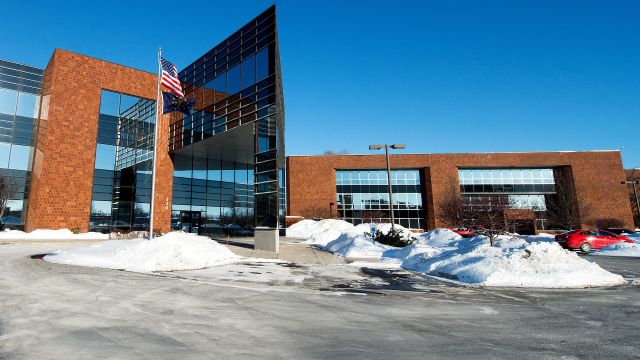Once Upon a Building: It’s First Fifty Years & Counting
By Don Foster
You’ve heard this story before. Change the town, change the year, but the tale still sounds familiar. It is hard to match brick on a building when the original brick that clads the building has been discontinued. It’s like looking for a needle in a haystack.
Time marches on. Some brick plants close. The horizon looks bleak. Then, even more, plants close, and the challenge of a good brick and mortar match becomes nearly impossible. It’s like trying to spin straw into gold. Popular colors from closed plants are no longer available. Occasionally, a brick company will take up the challenge to recreate some of its discontinued popular brick at one or two of its other locations. But these efforts haven’t always delivered the desired result.
In my experience, each brick plant has its own fingerprint. Sometimes, it is because of the local raw materials that are used. But there are a few times when more than one plant would pull clay or shale from the same quarry, yet their bricks still come out differently, so it is more than just materials that make the difference.
As it turns out, there are over a dozen variables that affect the final outcome of finished brick. In an individual brick plant, each of these variables may differ slightly from those at another. Some plants, for example, create their own in-house equipment to apply texture to the outside of the brick. Precisely matching that signature texture might be a challenge for any other plant. In most cases, it is the type or size of the kiln where the brick are fired that makes the difference.
Difficulties sometimes arise when an owner decides to make repairs to their original building or to put on an addition. Even if the original brick can still be made, the minimum order is often required by the plant before they’ll agree to make the brick. Unfortunately, the minimum order required is usually more brick than what is needed for a project. When a brick manufacturer limits the number of colors and sizes they make and raises the number of bricks required for special order, it limits the options for contractors who need that brick for their projects. Flexible solutions for these kinds of problems haven’t been forthcoming on a large scale in our industry. This troubles me when I consider our present and our future.
Let me tell you a true story about Brick Manufacturer X who sold brick for a large building back in 1950. Later, in 2002, the building’s owner wanted to put on an addition. Eleven thousand four hundred additional stylo-sized brick (8”x8” or 8 square) were required for the structure. Amazingly, the brick were still being made at the same plant that supplied the original brick in 1950. They were, however, only being made in modular size. To make them in stylo size would require a special order. Unfortunately, the order of 11,400 pieces fell short of the minimum order required to make the brick.
If you order brick early enough, sometimes a brick company can group together various small orders for the same brick to meet the number of bricks required for a special order. But this color, in stylo size, was not in high demand just then, so putting together several smaller orders to complete a special order was not a possibility.
The search began. Brick samples came in from across the country. None of them were close enough to the original brick to satisfy the architect or owner. One question came to the fore: if they could not find a suitable match, would they be forced to change to another building material altogether? As many of you know, brick has already lost a great deal of wall share. If our industry is to continue and prosper, it cannot afford to lose more.
But back to our story. Brick was a high priority for the architect and the owner. Staining was proposed and considered. A new search began for a donor brick as close as possible to the original in color, and one that matched the size and texture of the stylo brick, as well.
Enter The Belden Brick Company. They manufactured an 8”x8” Velour texture, which was close to the texture of the brick on the original building. The 8 square was in a vibrant Royalty Red which proved to be a good base color for the donor brick. While the bricklayers worked, however, a consensus of opinions was freely aired. Clearly, the person who picked this brick to match the original needed to have their eyes examined! Such opinions vanished quickly when the new brick were properly cleaned and a brick staining company stepped in to hand-stain each one. Eight shades of brown were developed and strategically applied using a Proprietary Proven Masonry Stain for a terrific match.
During the writing of this story, I had the opportunity to sit down with Brad Belden, President of The Belden Brick Company, and talk with him about this very story. Brad stated that “While it can be difficult and costly to make small runs of special brick, The Belden Brick Company is committed to do what it can to meet the needs of additions and match work.” There will be times when a set up charge will be required to cover some of those costs, but Brad realizes the need and responsibility his company has to this industry we all love.
To recap, the process begins with a test of a few loose donor bricks. Four steps follow in quick succession:
One, is the brick stainable? Can it absorb the stain, and to what degree? For staining to be successful and long-lasting, the stain must be absorbed into the pore structure of the brick.
Secondly, how close is the color match? Is the stained brick close enough to the original brick in color to satisfy masonry standards and those of the building owner and the architect? They approved these stain and color enhancements.
The third step is to affix a test panel of donor bricks to the building. Custom stain colors, first created for the loose bricks, are applied. Attention is given to the overall pattern of colors for the best match with the original brick. This test panel also met with approval from the owner and architect.
• Staining, the last step, proceeded, brick by brick, for the entire addition.
The architect and owner were thrilled with the outcome. This Office Building’s story continues today, nineteen years later, as an outstanding Case Study of the longevity, durability, and attractiveness of donor brick and a Proven Masonry Stain. This Office Building’s story also features the Michiana Area Construction Industry Advancement Fund’s award for Excellence In Construction (2002). As you can see, great matches can still be made even if brick are discontinued, or if the order you place does not meet the special-order minimum.
For an industry that has lost wall share to increasingly inferior products, taking the time to achieve a good match is especially important today. An order of 11,400 8”x8”s for one project may seem small and inconsequential, destined for rejection by the manufacturer. But if you multiply this common occurrence over hundreds of projects like this each year, the number of missed business opportunities adds up exponentially. That can affect everyone’s story.
There are companies that can help in so many ways. It is important that we keep all our options open as we work on projects requiring matching brick. Another such business is The Bowerston Shale Brick Company, also based in Ohio. We have teamed up with them many times over the years on additions and match work. A short time ago I met up with Shawn Malarik, Vice President of The Bowerston Shale Company, and he said their company “recognizes this need in the industry for match work and brick in a variety of sizes and textures, and that we have been committed to filling that void the best we can.” Like other brick manufacturers, they also like larger runs but found they still can be flexible enough to meet the needs of many smaller production runs. Shawn also shared how often they hand-blended brick to get the color range needed even closer.
Every brick building in some way represents our livelihood, our name, and our reputation. Together we have an opportunity to share in protecting the integrity of masonry with good-to-great repairs, fill-ins, and additions, and all while maintaining high property values on brick homes and buildings. For beauty, longevity, and durability, the best building material is brick. Then and now, and for all the tomorrows to come, working together we can make #MasonryStrong!
About the Author
Don Foster is founder and VP of Masonry Cosmetics Inc. He has experience with every aspect of brick manufacturing and sales, and has been staining masonry for over 20 years. Contact Don at Brickmen@gmail.com or 888-698-8705.



















